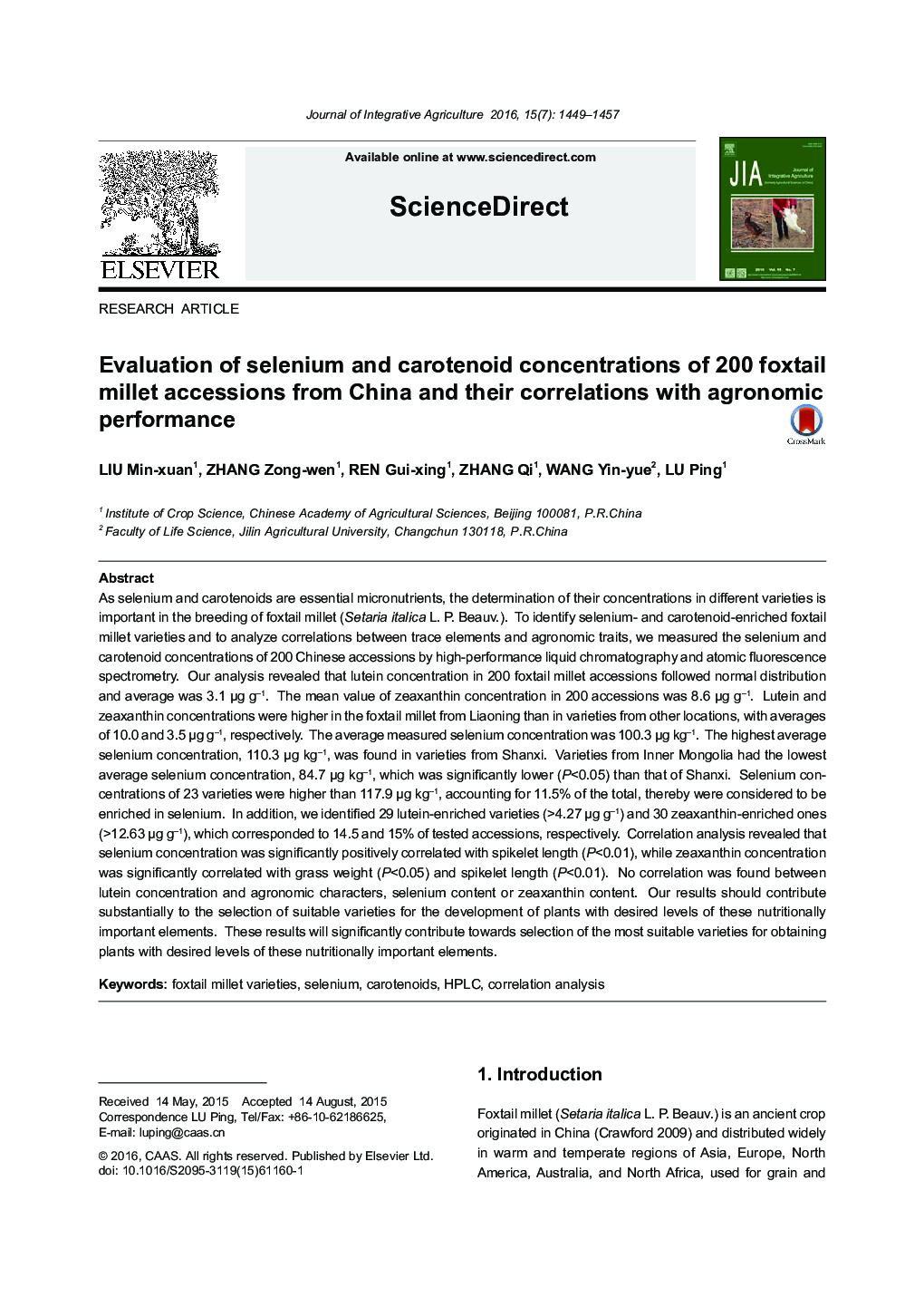| Article ID | Journal | Published Year | Pages | File Type |
|---|---|---|---|---|
| 10997784 | Journal of Integrative Agriculture | 2016 | 9 Pages |
Abstract
As selenium and carotenoids are essential micronutrients, the determination of their concentrations in different varieties is important in the breeding of foxtail millet (Setaria italica L. P. Beauv.). To identify selenium- and carotenoid-enriched foxtail millet varieties and to analyze correlations between trace elements and agronomic traits, we measured the selenium and carotenoid concentrations of 200 Chinese accessions by high-performance liquid chromatography and atomic fluorescence spectrometry. Our analysis revealed that lutein concentration in 200 foxtail millet accessions followed normal distribution and average was 3.1 μg gâ1. The mean value of zeaxanthin concentration in 200 accessions was 8.6 μg gâ1. Lutein and zeaxanthin concentrations were higher in the foxtail millet from Liaoning than in varieties from other locations, with averages of 10.0 and 3.5 μg gâ1, respectively. The average measured selenium concentration was 100.3 μg kgâ1. The highest average selenium concentration, 110.3 μg kgâ1, was found in varieties from Shanxi. Varieties from Inner Mongolia had the lowest average selenium concentration, 84.7 μg kgâ1, which was significantly lower (P<0.05) than that of Shanxi. Selenium concentrations of 23 varieties were higher than 117.9 μg kgâ1, accounting for 11.5% of the total, thereby were considered to be enriched in selenium. In addition, we identified 29 lutein-enriched varieties (>4.27 μg gâ1) and 30 zeaxanthin-enriched ones (>12.63 μg gâ1), which corresponded to 14.5 and 15% of tested accessions, respectively. Correlation analysis revealed that selenium concentration was significantly positively correlated with spikelet length (P<0.01), while zeaxanthin concentration was significantly correlated with grass weight (P<0.05) and spikelet length (P<0.01). No correlation was found between lutein concentration and agronomic characters, selenium content or zeaxanthin content. Our results should contribute substantially to the selection of suitable varieties for the development of plants with desired levels of these nutritionally important elements. These results will significantly contribute towards selection of the most suitable varieties for obtaining plants with desired levels of these nutritionally important elements.
Related Topics
Life Sciences
Agricultural and Biological Sciences
Agricultural and Biological Sciences (General)
Authors
Min-xuan LIU, Zong-wen ZHANG, Gui-xing REN, Qi ZHANG, Yin-yue WANG, Ping LU,
